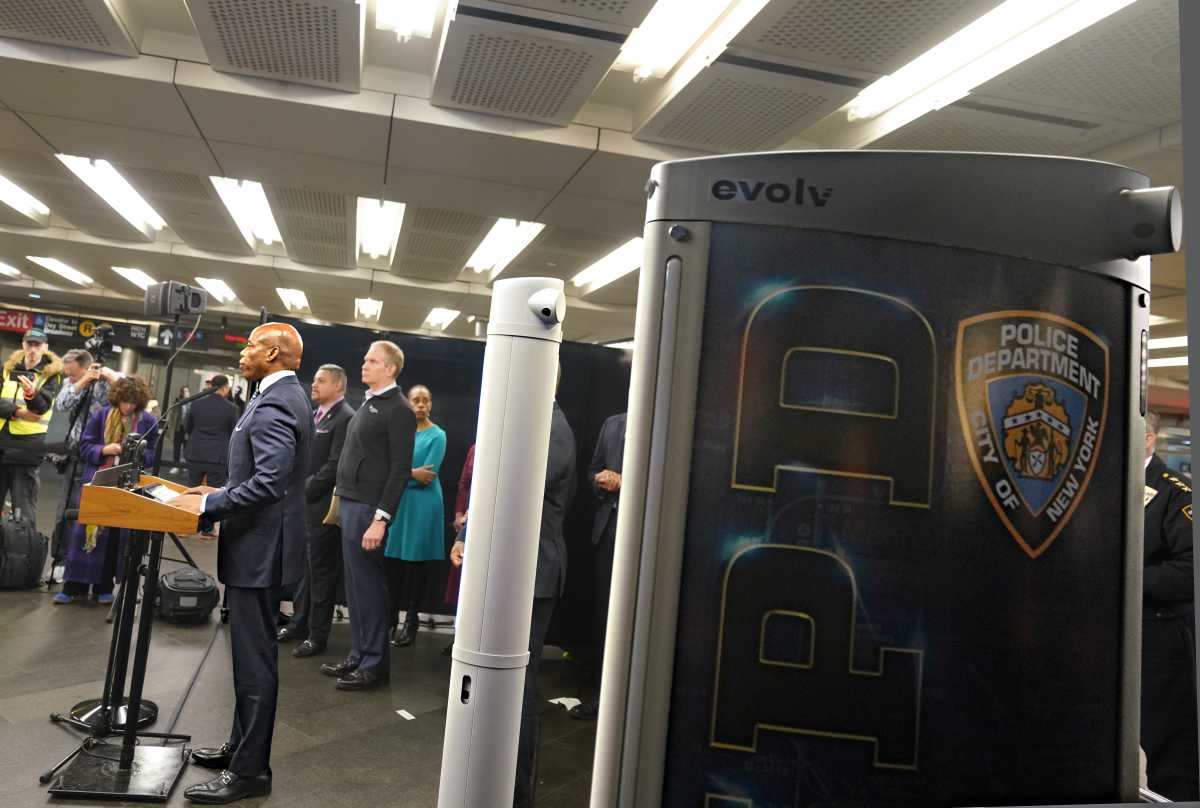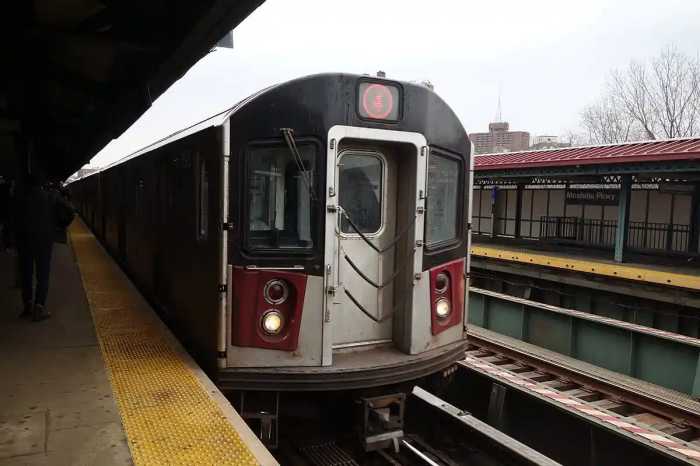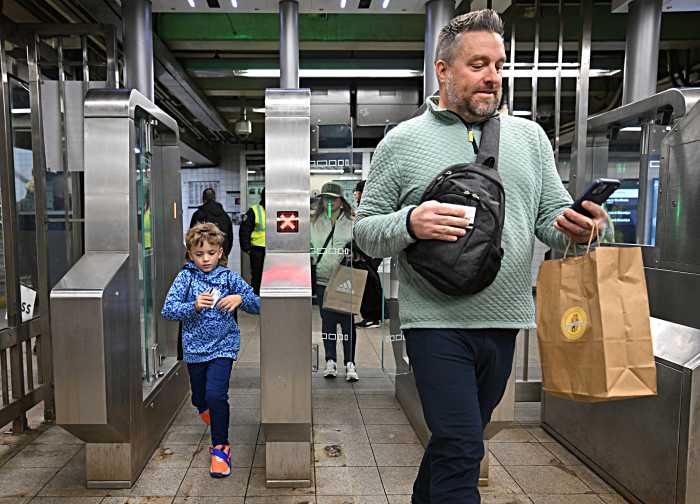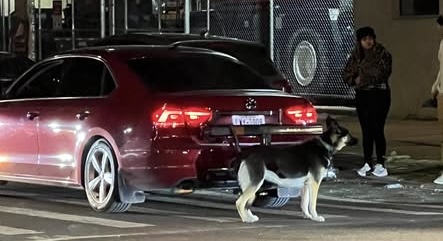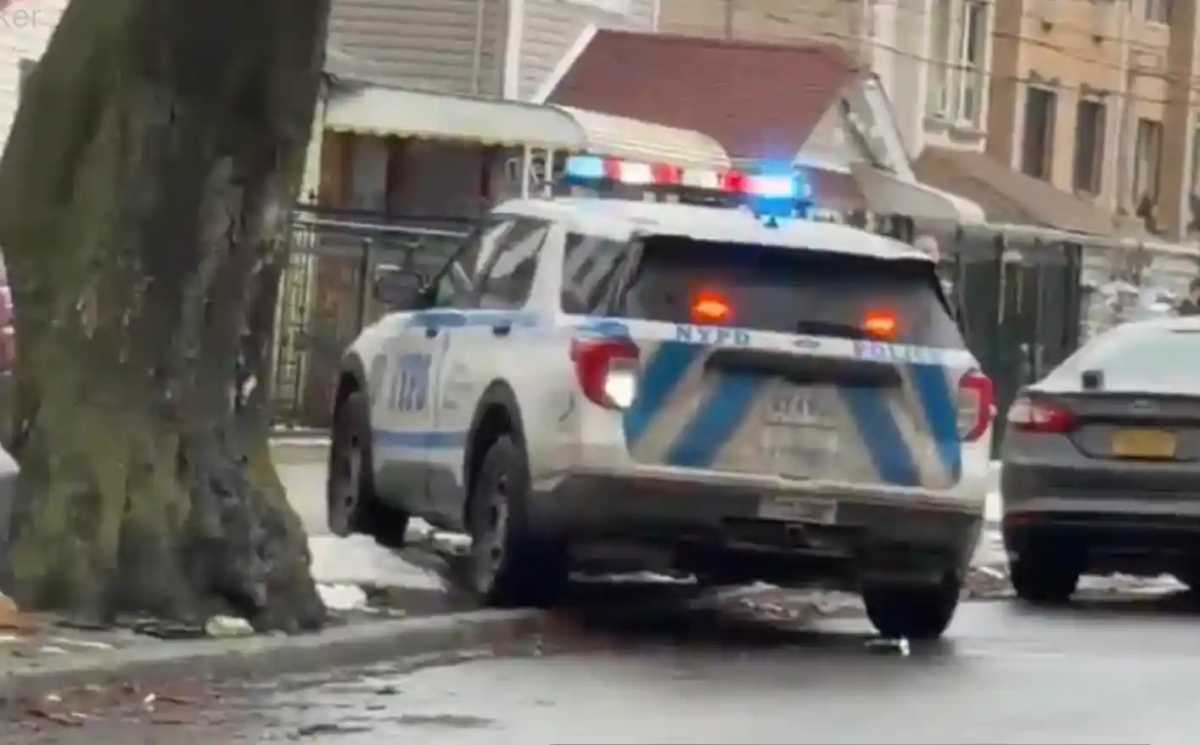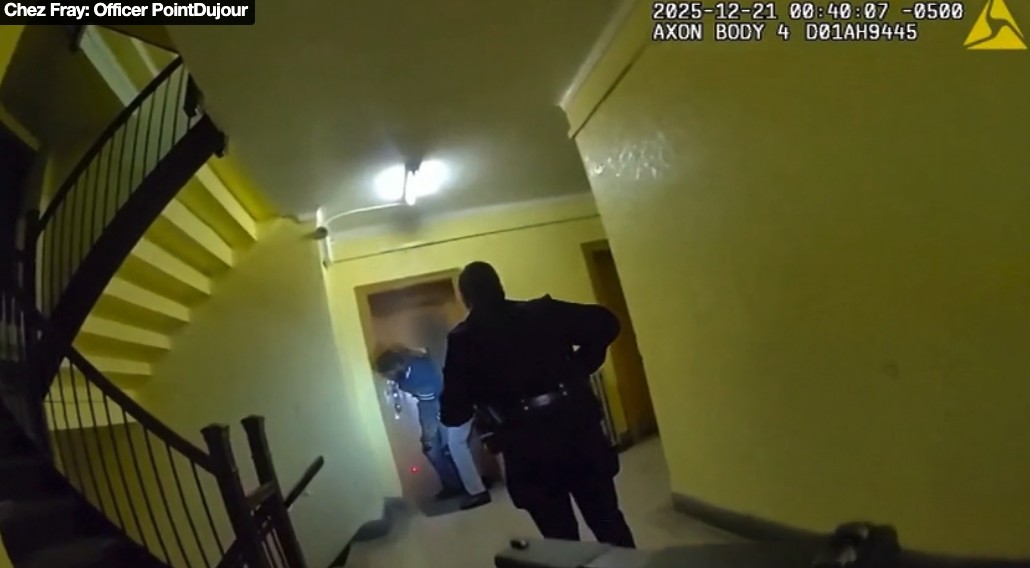Mayor Eric Adams plans to introduce AI-powered metal detectors into the New York City subway system in a bid to catch illegal guns and knives.
The mayor said that the city will begin testing in subway stations high-tech metal detectors manufactured by Evolv Technology, which the mayor said has a “99%” accuracy rate in identifying guns and knives, and differentiating them from typical metal items like cell phones and keys.
Hizzoner boldly compared the move to adapt the tech to New York City’s subways to the space race of the 1950s and 1960s — including the Soviets putting the first satellite into orbit and John F. Kennedy’s famous call to put an American on the moon before the end of the 1960s.
“This is a Sputnik moment. When President Kennedy said we were gonna put a man on the moon and everyone responded,” said Adams. “Well today, we said, we’re gonna bring technology that can identify guns and other dangerous weapons, and our private industry responded.”
The move comes amid a rash of high-profile crimes on the subway, including the fatal shoving of straphanger Jason Volz in front of a 4 train in Harlem, this month’s shooting on a crowded A train in Brooklyn, and last month’s mass shooting aboard a 4 train in the Bronx.
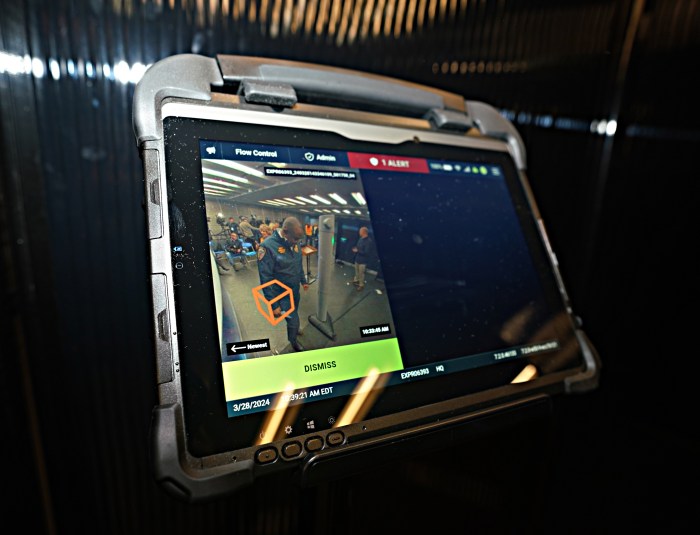
The NYPD has surged officers into the system while the governor deployed the National Guard, and arrests in the system are up nearly 50% this year. Police have seized 450 weapons, including 19 illegal guns, in the transit system this year, a 72% increase over last year. Officials credit the surge with a downward trajectory of major crime in February and March.
While overall crime is generally low compared to aboveground, subway crimes are often random and can lend a perception of disorder to New York’s most important communal public space, officials say.
“The random acts of violence, they play on the psyche of New Yorkers,” said Mayor Adams. “Now, would I prefer us not having to walk through these to come on our system. You’re darn right I do. But we have to live life the way it is, and work to make it what it ought to me.”
To comply with the city’s POST Act regulating the NYPD’s use of surveillance tools, Adams said the metal detectors would not be deployed for another 90 days as the city identifies more vendors capable of piloting tech within the system.
While Thursday’s demonstration took place at the Fulton Street hub, Hizzoner did not have a list of stations where metal detectors would be deployed, nor is it decided whether they would be outside stations or near turnstiles.
Adams said the sensors may be deployed in areas that see high statistics of gun crime, or where large numbers of gunshots are detected using the city’s ShotSpotter microphones.
Michael Gerber, the NYPD’s deputy commissioner for legal matters, said that if a person sees the metal detectors and decides to leave the station, that is their right and it doesn’t present probable cause to search them. But if they do go through and a weapon is detected, police would have the right to search the individual and, if they find a weapon, detain them.
The mayor claimed that in testing Evolv’s technology, administration officials had observed a “99%” accuracy rate in detecting illegal guns and knives, and differentiating them from other metal items. However, he noted that “if Evolv had a 70% hit ratio, that’s 70% more than we have now.”

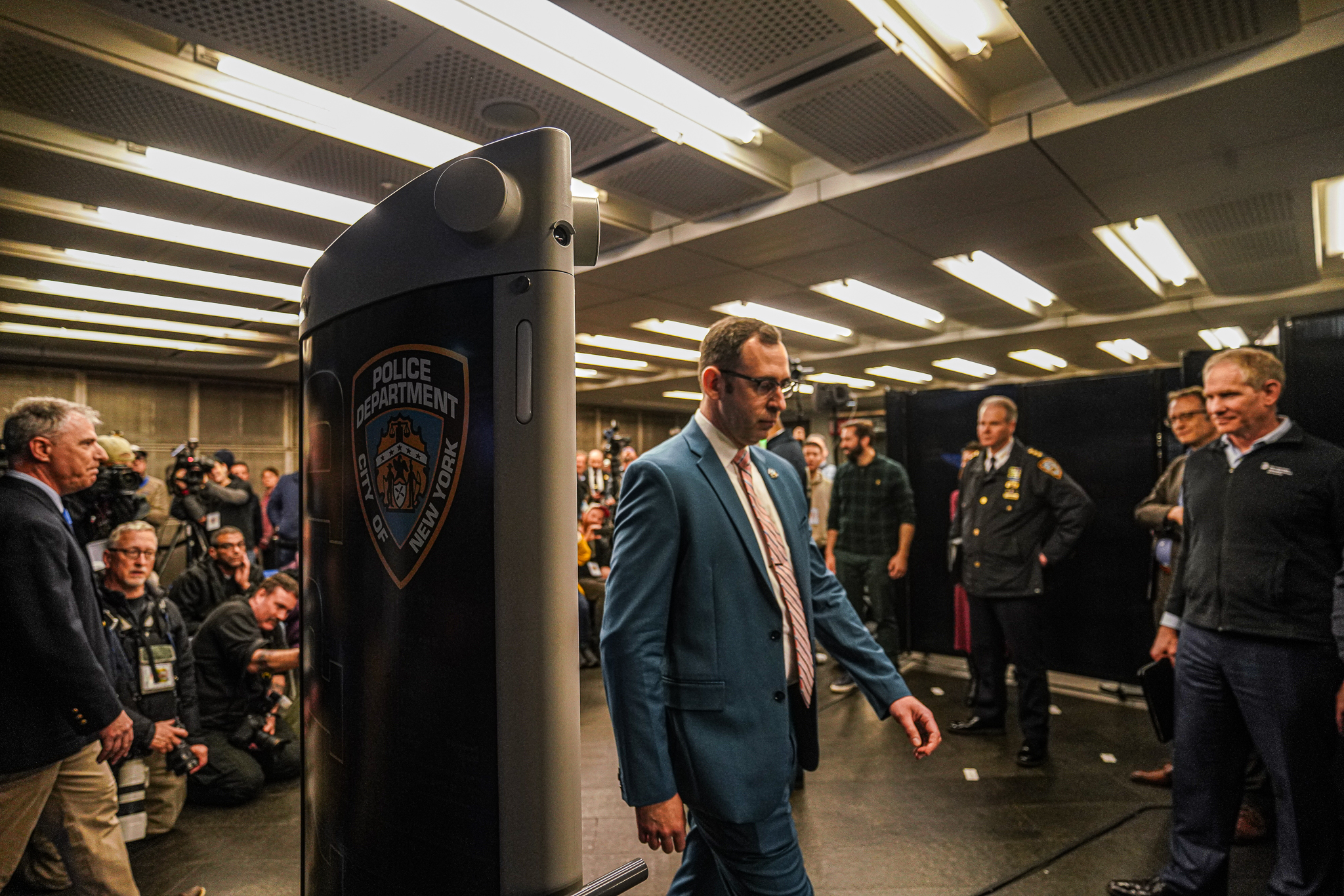
On its website, Evolv claims that it “leverag[es] AI on your security cameras to identify brandished firearms.”
Questions of overreach
Not everyone, however, is as confident in Evolv as the mayor.
Upstate in Utica, a high school student sued the company after being stabbed by a fellow student with a knife that was not caught by the Evolv sensors at his school. Evolv is also currently under separate investigations by the Federal Trade Commission and Securities & Exchange Commission, probing whether the technology is as accurate as the company claims.
“The technology is guaranteed to slow down your commute, but it can’t keep you safe,” said Albert Fox Cahn, anti-surveillance advocate with the Surveillance Technology Oversight Project (STOP). “This is yet another example of the Mayor’s surveillance playbook, turning to high-tech gimmicks instead of real solutions. We need to invest in solutions that actually keep New Yorkers safe, not more discredited tech vendors.”
Officials said that the tech is already used at high-volume areas like stadiums and disputed that it would slow down commutes and force riders to wait in line.
Still, others wondered whether the tech would violate New Yorkers’ privacy and contribute to an air of paranoia.
Read More: MLB Power Rankings 4.0: New No. 1 & Mets Top 10!
“Simply put, gun detection systems are flawed and frequently trigger false alarms, which induces panic and creates situations that could result in the loss of life,” said Jerome Greco, head of the Legal Aid Society’s digital forensics unit. “This Administration’s headstrong reliance on technology as a panacea to further public safety is misguided, costly, and creates significant invasions of privacy. During this interim period, we urge all New Yorkers to voice their concerns with the City over these dystopian technologies.”
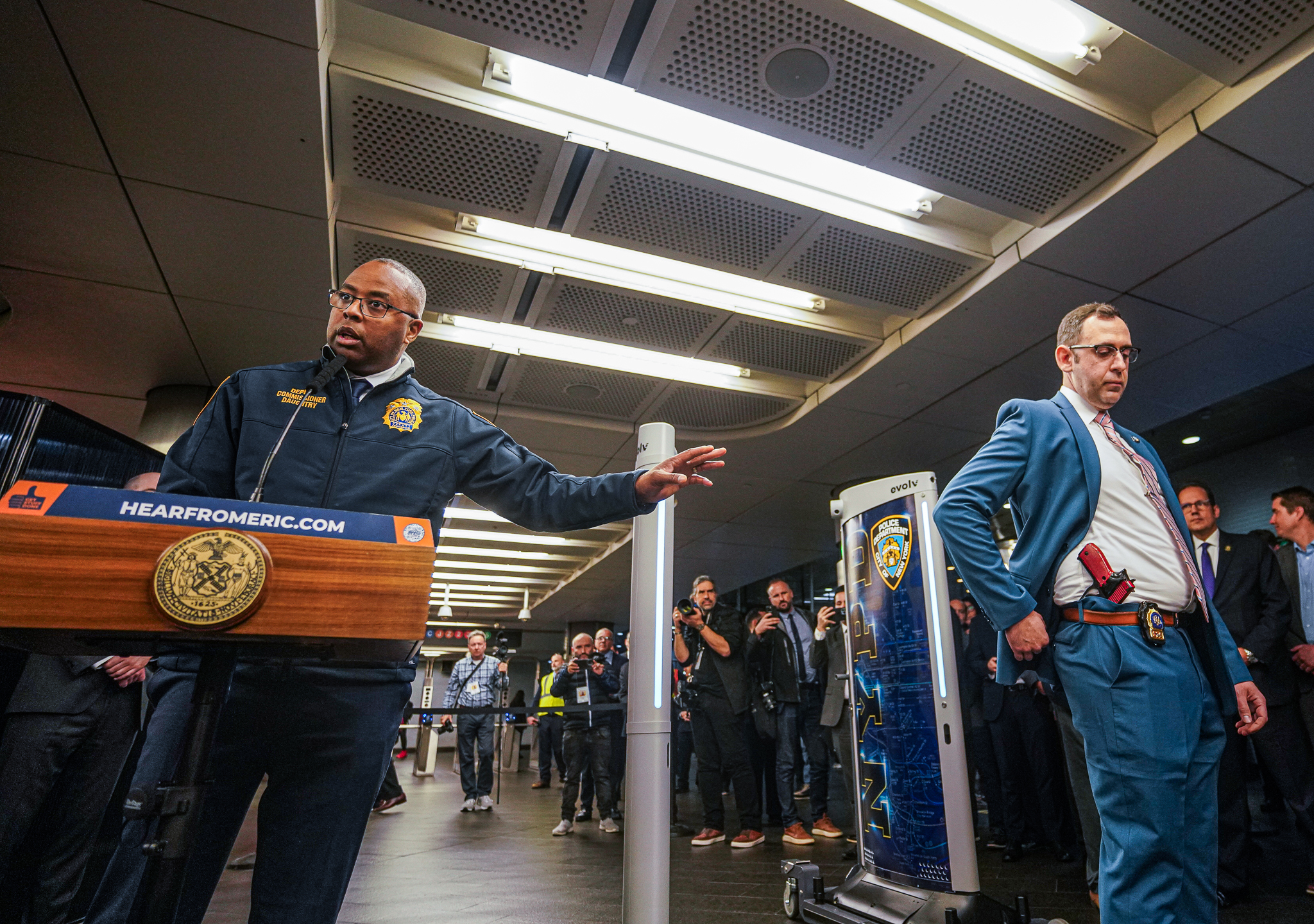
Read more: MTA Enhances Brooklyn Station Connectivity



